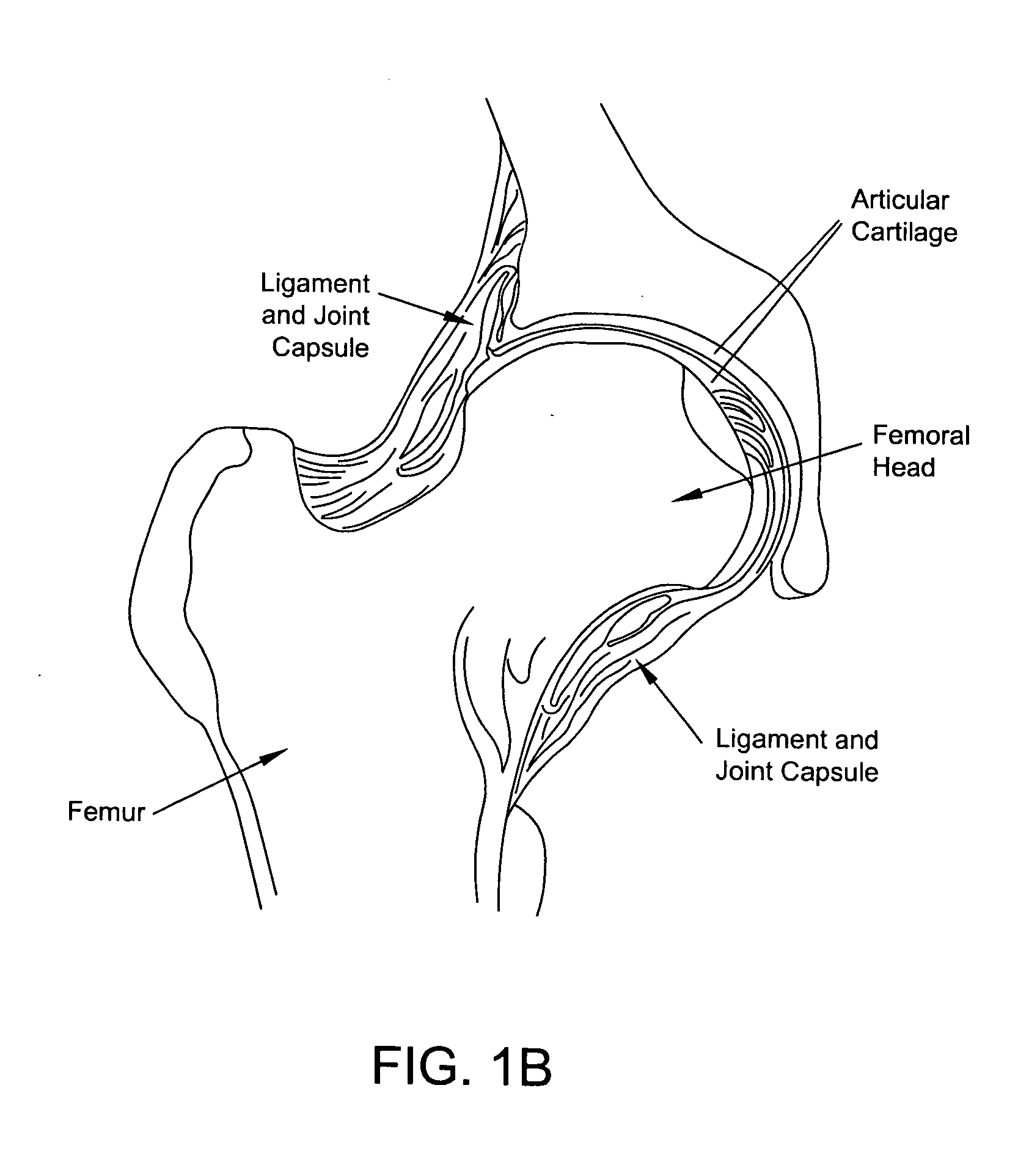Methods and apparatus for performing an arthroscopic procedure using surgical navigation
a technology of surgical navigation and arthroscopic procedure, applied in the field of surgical methods and equipment, can solve the problems of affecting the function of the hip joint, significant recovery time, and reducing the range of motion of the robotic arm, so as to prevent the robotic arm from damaging the tissue, avoid the risk of surgical damage, and ensure the effect of accurate positioning of the anchor
- Summary
- Abstract
- Description
- Claims
- Application Information
AI Technical Summary
Benefits of technology
Problems solved by technology
Method used
Image
Examples
example 1
[0099]As noted above, hip arthroscopy is becoming increasingly more common in the diagnosis and treatment of various hip pathologies. However, due to the anatomy of the hip joint and the pathologies associated with the same, hip arthroscopy is currently practical for only selected pathologies.
[0100]One procedure which is sometimes attempted arthroscopically relates to femoral debridement for treatment of cam-type femoroacetabular impingement (i.e., cam-type FAI) and / or acetabular debridement for treatment of acetabular femoroacetabular impingement (i.e., pincer-type FAI). More particularly, with cam-type FAI, irregularities in the geometry of the femur can lead to impingement between the femur and the rim of the acetabular cup. Treatment for cam-type FAI typically involves debriding the femoral neck and / or head, using tools such as burrs, to remove the bony deformities causing the impingement. See FIGS. 10 and 11. In this respect it should be appreciated that it is important to debr...
example 2
[0123]In the example discussed above, the system merges the modified 3-D virtual model image with the live scope image so as to provide the surgeon a visual guide to follow during the debridement procedure. However, the modified 3-D virtual model is “blind” to the location of the debridement tool during the debridement procedure, and the virtual guide is provided solely in the form of visual markings placed on the modified 3-D virtual model prior to surgery.
[0124]Alternatively and / or additionally, it is also possible to place a “tracker” on the debridement tool, so that the system can determine the current location of the debridement tool during surgery. Furthermore, the system can integrate information about the current location of the tracked debridement tool into the modified 3-D virtual model, so as to guide the surgeon on how the debridement tool should be advanced relative to the anatomy so as to remove the impinging bone. By way of example but not limitation, in this construc...
PUM
 Login to View More
Login to View More Abstract
Description
Claims
Application Information
 Login to View More
Login to View More - R&D
- Intellectual Property
- Life Sciences
- Materials
- Tech Scout
- Unparalleled Data Quality
- Higher Quality Content
- 60% Fewer Hallucinations
Browse by: Latest US Patents, China's latest patents, Technical Efficacy Thesaurus, Application Domain, Technology Topic, Popular Technical Reports.
© 2025 PatSnap. All rights reserved.Legal|Privacy policy|Modern Slavery Act Transparency Statement|Sitemap|About US| Contact US: help@patsnap.com



